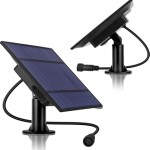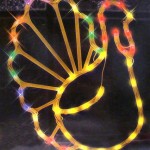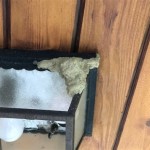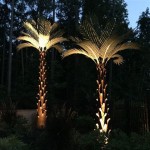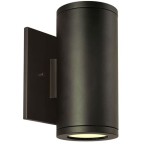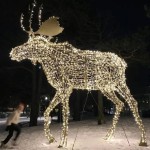Residential Outdoor Lighting Regulations in Los Angeles
The City of Los Angeles, keen on balancing public safety and energy conservation with the preservation of the night sky, has implemented specific regulations governing residential outdoor lighting. These regulations aim to minimize light pollution, reduce energy waste, and promote a more sustainable and environmentally-conscious urban environment. Understanding these regulations is crucial for homeowners, contractors, and developers who plan to install or modify outdoor lighting systems on residential properties within the city limits.
The foundational document guiding outdoor lighting standards in Los Angeles is the Los Angeles Municipal Code (LAMC). Relevant sections, particularly those pertaining to planning and building, outline the specific requirements and limitations applicable to residential properties. These regulations address various aspects of outdoor lighting, including light intensity, shielding, permitted hours of operation, and accepted lighting technologies.
Furthermore, the city's emphasis on sustainability has led to increasingly stringent requirements over time. Considerations for dark sky preservation, the impact on nocturnal wildlife, and the overall reduction of greenhouse gas emissions have all played a role in shaping the current regulations. Compliance with these regulations is mandatory, and failure to adhere to them can result in fines, required modifications, or even legal action.
Therefore, a thorough understanding of the relevant sections of the LAMC and associated interpretations is essential for ensuring that all outdoor lighting installations meet the required standards. Ignorance of the regulations is not a valid excuse for non-compliance. The city provides resources and information to assist residents in understanding and adhering to these guidelines, fostering a collaborative approach to responsible outdoor lighting.
Key Point 1: Light Intensity and Shielding Requirements
One of the core components of Los Angeles' residential outdoor lighting regulations focuses on controlling the intensity and direction of light emitted from fixtures. The city strives to minimize light trespass, which refers to unwanted light spilling onto neighboring properties or into the night sky. This is achieved through specific limitations on the maximum allowed light output (measured in lumens) for different types of fixtures and applications. Furthermore, the regulations mandate the use of shielding to direct light downward and prevent it from escaping horizontally or upward.
Full cutoff fixtures are often required in many residential areas. These fixtures are designed to emit light only downward, eliminating any upward component. This is accomplished through the use of shields or reflectors that block light from escaping above the horizontal plane. The use of non-cutoff fixtures, which allow light to escape at various angles, is generally discouraged and may be prohibited in certain areas or applications.
The specific lumen limits and shielding requirements vary depending on factors such as the zoning district, the size of the property, and the type of lighting application (e.g., security lighting, landscape lighting, pathway lighting). It is imperative to consult the LAMC and any applicable supplemental documents to determine the exact requirements for a specific project. Diagrams and illustrations are often provided to clarify the proper use of shielding and the types of fixtures that comply with the regulations.
In addition to the general requirements for shielding and light intensity, there may be specific restrictions on the use of certain types of lighting, such as floodlights, which are typically associated with high intensity and significant light trespass. When floodlights are permitted, they are often subject to stricter limitations on their wattage, aiming angle, and hours of operation. Furthermore, motion sensors may be required to ensure that the lights are only activated when needed, further reducing energy consumption and light pollution.
Ultimately, the goal is to provide adequate illumination for safety and security without causing undue disturbance to neighbors or contributing to the overall light pollution problem. Careful planning, selection of appropriate fixtures, and adherence to the shielding requirements are essential for achieving this balance.
Key Point 2: Permitted Hours of Operation and Curfew Regulations
Beyond the physical characteristics of the lighting fixtures themselves, Los Angeles' residential outdoor lighting regulations also address the timing of their operation. The city imposes restrictions on the hours during which outdoor lighting can be used, particularly during nighttime hours. These curfew regulations are designed to minimize energy consumption and further reduce light pollution during periods of low activity and when most residents are asleep.
The specific permitted hours of operation vary depending on the type of lighting and the zoning district. Generally, security lighting may be permitted to operate for longer hours than decorative or landscape lighting. However, even security lighting is often subject to restrictions during the late-night and early-morning hours. The use of timers or motion sensors is frequently encouraged to ensure that lights are only activated when needed, thereby minimizing unnecessary energy consumption and light pollution.
Furthermore, certain types of lighting, such as illuminated advertising or signage, may be subject to stricter curfew regulations or even outright prohibition during certain hours. These restrictions are intended to prevent the excessive illumination of residential areas, particularly during the hours when residents are most sensitive to light disturbance.
The city actively enforces these curfew regulations, and residents who violate them may be subject to fines or other penalties. Therefore, it is crucial for homeowners and property managers to understand the specific permitted hours of operation for their respective zoning districts and to ensure that their outdoor lighting systems are programmed to comply with these regulations. Smart lighting systems, which allow for automated control of lighting schedules, can be particularly useful in ensuring compliance with the curfew regulations.
The implementation of these curfew regulations reflects the city's commitment to promoting a more sustainable and environmentally-conscious urban environment. By limiting the hours during which outdoor lighting can be used, Los Angeles aims to reduce energy consumption, minimize light pollution, and improve the quality of life for its residents.
Key Point 3: Accepted Lighting Technologies and Color Temperature
Los Angeles' residential outdoor lighting regulations also address the types of lighting technologies that are permitted for use. The city encourages the use of energy-efficient lighting technologies, such as LED (light-emitting diode) fixtures, which consume significantly less energy than traditional incandescent or halogen lamps. In some cases, the use of less efficient lighting technologies may be restricted or even prohibited.
Furthermore, the regulations often specify requirements for the color temperature of outdoor lighting. Color temperature is a measure of the "warmth" or "coolness" of light, measured in Kelvin (K). Lower color temperatures (e.g., 2700K or 3000K) produce a warmer, more yellowish light, while higher color temperatures (e.g., 4000K or 5000K) produce a cooler, more bluish light. The city typically encourages the use of lower color temperatures for outdoor lighting, as these are less disruptive to nocturnal wildlife and contribute less to light pollution.
The use of excessively blue-rich light is particularly discouraged, as it has been shown to have a negative impact on human health and the environment. Blue light can suppress melatonin production, which can disrupt sleep patterns and increase the risk of certain health problems. It can also disorient nocturnal animals and interfere with their natural behaviors.
Therefore, the regulations may specify a maximum allowable color temperature for outdoor lighting, often in the range of 3000K or lower. Homeowners and contractors should carefully consider the color temperature of their chosen lighting fixtures to ensure compliance with these regulations. LED fixtures are readily available in a wide range of color temperatures, making it easy to find options that meet the city's requirements.
The emphasis on energy-efficient lighting technologies and appropriate color temperatures reflects the city's commitment to promoting a more sustainable and environmentally-conscious urban environment. By encouraging the use of energy-efficient lighting and limiting the use of blue-rich light, Los Angeles aims to reduce energy consumption, minimize light pollution, and protect the health and well-being of its residents and wildlife.
Beyond these core concepts, it's important to acknowledge the ongoing evolution of residential outdoor lighting regulations in Los Angeles. As technology advances and scientific understanding of light pollution's impacts improves, the LAMC is periodically revisited and updated. Therefore, relying on outdated information can lead to unintentional non-compliance. Regular consultation with the Department of Building and Safety or other relevant city agencies is recommended to stay abreast of the most current requirements.
Understanding the enforcement mechanisms is also critical. While some violations might be addressed through warnings and opportunities for correction, repeated or egregious offenses can result in significant penalties. Documenting compliance, especially during the initial installation phase, can prove invaluable in avoiding potential disputes or misunderstandings with city officials. This documentation might include product specifications, installation diagrams, and photometric data demonstrating adherence to light level and shielding requirements.
Furthermore, collaborating with qualified lighting professionals can greatly simplify the process of navigating these complex regulations. Certified lighting designers and electricians possess the expertise to recommend appropriate fixtures, ensure proper installation, and confirm compliance with all applicable codes and standards. Their involvement can save homeowners time, money, and potential headaches associated with non-compliant lighting installations.
In conclusion, adherence to Los Angeles' residential outdoor lighting regulations is not merely a matter of legal compliance but also a responsible contribution to the city's efforts to create a more sustainable, energy-efficient, and environmentally-conscious urban environment. By understanding and implementing these regulations, residents can help to minimize light pollution, conserve energy, and protect the health and well-being of both humans and wildlife.
Csd Modifications The Ordinance Modifies Specific Community Standards Districts Leona Valley Acton Santa Monica Mountains N

Ventura County Outdoor Lighting Restrictions Resource Management Agency

What Is Ja8 And How Does It Affect Your Space Candex Lighting

Ventura County Outdoor Lighting Restrictions Resource Management Agency

Outdoor Lighting Causing Light Pollution Delmarfans Com

Ojai Valley Dark Sky Ordinance Frequently Asked Questions Ventura County Resource Management Agency

S Title 24 Energy Regulation Impact On The Lightning Indust Candex Lighting

Nighttime Outdoor Lighting And The Challenge Of Light Pollution Radiant Vision Systems

Nighttime Outdoor Lighting And The Challenge Of Light Pollution Radiant Vision Systems

How Does Zoning Work In Los Angeles City Planning
